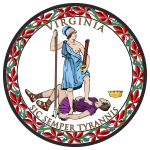Statue of George Washington (Houdon)
1792 sculptures1932 sculpturesBronze sculptures in VirginiaBuildings and monuments honouring American presidents in the United KingdomMonuments and memorials in Washington, D.C. ... and 6 more
Monuments and memorials to George Washington in the United StatesNational Statuary Hall CollectionSculptures of men in VirginiaStatues in VirginiaStatues of George WashingtonUse mdy dates from October 2022

George Washington is a statue by the French sculptor Jean-Antoine Houdon from the late 18th century. Based on a life mask and other measurements of George Washington taken by Houdon, it is considered one of the most accurate depictions of the subject. The original sculpture is located in the rotunda of the Virginia State Capitol in Richmond, Virginia, and it has been copied extensively, with one copy standing in the United States Capitol Rotunda. The date given for the sculpture varies. It was commissioned by the Virginia General Assembly in 1784, begun in 1785, signed "1788", completed in 1791 or 1792, and delivered in 1796.
Excerpt from the Wikipedia article Statue of George Washington (Houdon) (License: CC BY-SA 3.0, Authors, Images).Statue of George Washington (Houdon)
Bank Street, Richmond Shockoe Slip
Geographical coordinates (GPS) Address Phone number Website Nearby Places Show on map
Geographical coordinates (GPS)
| Latitude | Longitude |
|---|---|
| N 37.5386752041 ° | E -77.4333327671 ° |
Address
Virginia State Capitol
Bank Street 1000
23219 Richmond, Shockoe Slip
Virginia, United States
Open on Google Maps










